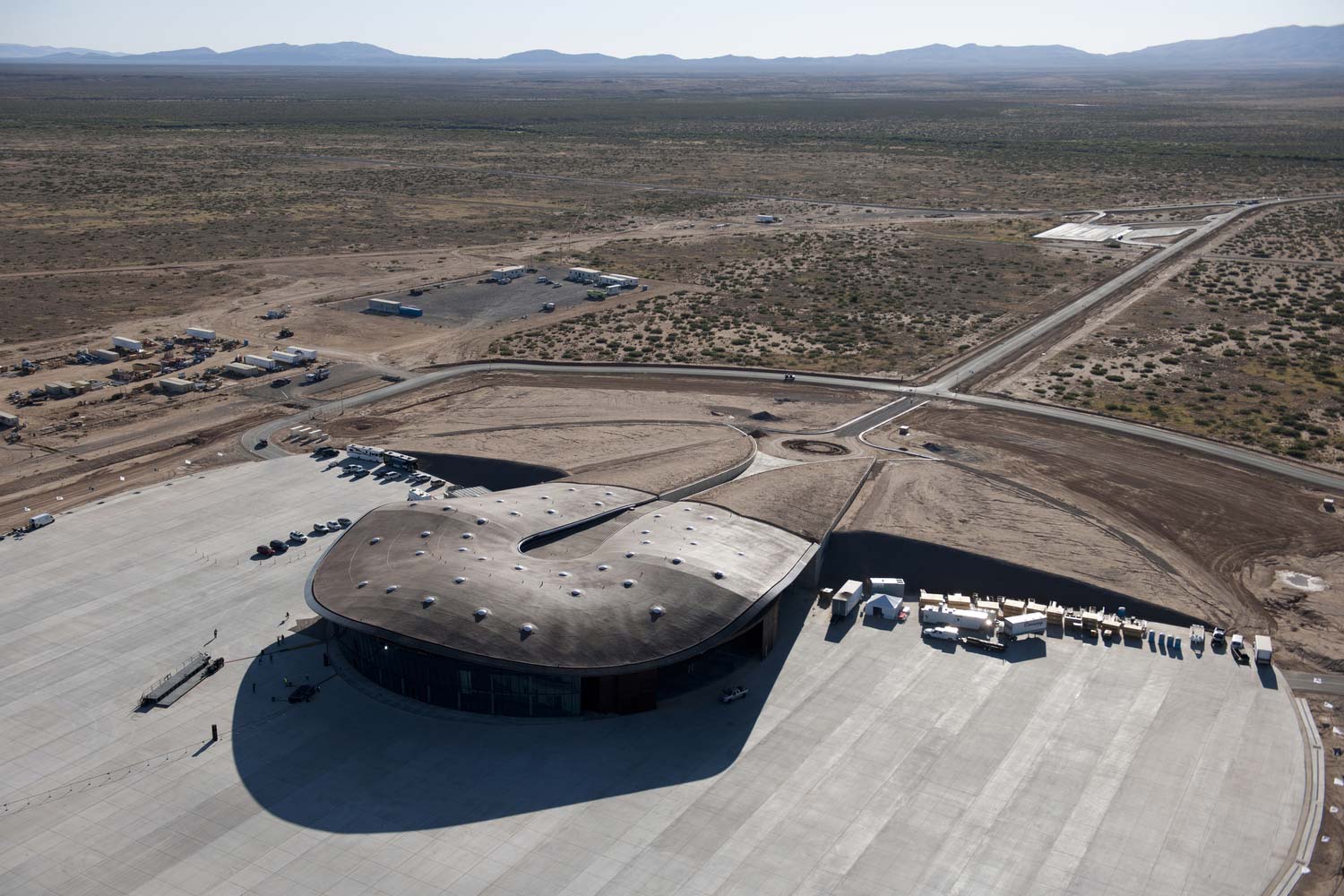Innovation
Virtual fresh air: Air conditioning evolves to combat climate change
New (and not so new ideas) for ventilating and cooling buildings promise to use less energy while taking advantage of nature.

Apparently, it’s a good time to be indoors. The earth is warming up, warns the U.N.’s Intergovernmental Panel on Climate Change (IPCC) this week. In the same hot breath, its North American chapter calls for “targeted and sustainable air conditioning,” among other steps, to deal with the impending global catastrophe.
But cool your jets! Summer air conditioning (aka AC) will cause a surge in energy demand, the IPCC also warns, spiraling from about 300 terawatt-hours in 2000 to a projected 4,000 terawatt-hours in 2050. That will add way more greenhouse gases, fanning the proverbial flames.
Have no fear
Fortunately, we're seeing new ideas that promise to dramatically boost the power of AC while reducing the energy consumption associated with it. Ideas like underfloor air flow designs and chilled beams are entering the architectural lexicon. There are biofilters that scrub and freshen indoor air, so it can recirculate without losing its cool, so to speak. Hordes of new parasitic devices are emerging to siphon energy from old, inefficient heating air-conditioning and ventilation (HVAC) systems. These technologies steal the heat and cold air, sending it off to places in a building where it’s needed.
Architects and engineers also reaching back into the past to revive smart ideas from the ancients, such as operable windows (as opposed to those you can't open), roofs covered with earth and rock for insulation, water features, and Persian-style wind catchers that naturally ventilate indoor air.
Green-minded, innovative architects like the United Kingdom's Norman Foster and Thom Mayne of Morphosis Architects are using these ideas, and the results are often breathtaking.
One example is the low-lying form of Spaceport America (pictured below), designed by Foster and Partners and SMPC Architects. (Photo is courtesy of the companies.) The structure is dug into the landscape to exploit the thermal mass, which buffers the building from the extremes of the New Mexico climate where it is located. The structure is positioned so that westerly winds offer ventilation.

First, some background
The first chilly blast for indoor comfort came when pioneers like Willis Carrier took basic cooling concepts and built big centrifugal chiller and central compressors, starting in the mid-1920s. Their debut at the Rivoli Theater in New York‘s Times Square signaled the start of the modern era of large-scale central systems. While today's equipment is far more efficient, the same basic components cool contemporary summer movie crowds.
These massive “engineered systems“ brought Americans a revolution of comfy spaces, highly productive office workers, and suburban sprawl in hot southern cities. They also brought glass-box modernism, and functional high-rises.
But by the 1960s and 1970s, AC also gave us “tight,” hermetically sealed-off buildings that got moldy. Sick building syndrome became almost pandemic in the 1980s, as the U.S. Environmental Protection Agency reported then.
The big HVAC systems also used massive amounts of energy, because they aimed to cool entire indoor volumes, no matter how big: Airports, symphony halls—even the Louisiana Superdome in New Orleans. We pre-cooled in an attempt to hold a comfy 72 degrees with minimal humidity throughout the afternoon.
The me generation gets AC
The second apex of AC was all about personalization, with new zoning controls for houses and packaged terminals for motel rooms. More thermostats were sold, and new automated systems used set points and swarms of sensors and actuators to control ambient conditions. “Only cool what you need to,” was the mantra, and individual comfort—and personal control—took primacy.
Several patents for the personal environment system (PES) emerged in the late 1980s and early 1990s. They included a well-publicized product from Johnson Controls that appropriated the generic term and provided heating, cooling and fanning for a desk-bound office worker. This approach addressed the No. 1 complaint related to building satisfaction: Too hot or too cold. (Or, as is the case at my house, both.)
This led to micro-conditioning notions that proliferated from the 1980s onward. His and her temp controls appeared on automobile dashboards. Raised floors carried cool air directly to big computer arrays. Emergency AC trucks morphed into portable “spot coolers” for system outages or poorly designed spaces. Our troops in Desert Storm even wore AC vests. Cooling shoes were patented.
It was an effective idea but very expensive. Not everyone can wear an astronaut suit wherever they go. This helped seed the third renaissance of environmental conditioning, with its emphasis on the environment.
Why not open the window?
The outside-in notion started with greenies and health nuts (and smokers) who petitioned for the "radical" idea of installing windows that people could actually open and close as needed. Advocates point out that not only does this approach address individual comfort and give occupants a sense of control, it uses natural means to address the need for air circulation and ventilation.
A few architects liked the idea, but many engineers and building owners initially reacted against the idea of uncontrolled airflows. Fears of higher energy bills surfaced.
Solving these twin issues is at the heart of today’s building design, and it has been a steadfast goal of the green building movement and LEED certification by the U.S. Green Building Council.
That's why the focus now is on smart HVAC design rather than powerful blowers, pumps and compressors. Alongside these new technologies, we're seeing ancient techniques like wind catchers and water features, as well as newer ideas such as passive solar heating, another 70s invention. Architects are designing cutting-edge buildings based on easy physics. For example, the fact that heat rises, shade cools and massive materials such as masonry effectively hold heat and cold. Air barriers, which protect against unintended air infiltration through wall joints, are also a whole new industrial niche.
Carefully engineered developments win the day
One trend is to program smart building sensors and controls so the correct amount of fresh air is let in throughout the day, specially in large buildings. By maximizing this so-called “free cooling,” we can minimize potential energy loss.
I mentioned Foster and Mayne as notable architects championing this idea, but one could add names like Peter Busby and such paired practices as Brooks and Scarpa, Miller and Hull, and Lake and Flato. Their buildings are designed to require the shortest possible cooling and heating seasons. They draw in air and spread it around the building.
In these structures, occupants are happier—in most cases. They are relatively comfortable and sometimes have more control over outdoor air. They are inhaling less carbon dioxide (CO2), which addles the brain, impairs decision-making and kills productivity.
Novel ideas contributing to this third wave include AC innovations like "virtual fresh air." An example comes from the company Nedlaw, which makes a plant-covered indoor wall that scrubs toxins and CO2 from indoor air while adding a dollop of nature and spring freshness. (Even the LEED rating system allows this as “makeup outdoor air,” according to a Nedlaw executive.) Then the air is recirculated—ideally not with fans alone but also with the natural air currents promoted by a sensible, modern building design.
Considering that these ideas address both of the potentially negative effects called out by the IPCC this week—rising AC loads around the world and the attendant energy consumption increases—I’d say that the idea of adding virtual fresh air features to building designs is a guaranteed growth industry.
Editor's note: The cool comfy interiors of the proposed Museum of Arts and Industries, by Thom Mayne's firm Morphosis, use many of the virtual fresh air concepts discussed in this column. The image is courtesy of Morphosis and National Building Museum.
Sign up for our weekly newsletter featuring in-depth business innovation stories by correspondents around the globe, top domestic reporters and thought-provoking opinion columnists.
This post was originally published on Smartplanet.com